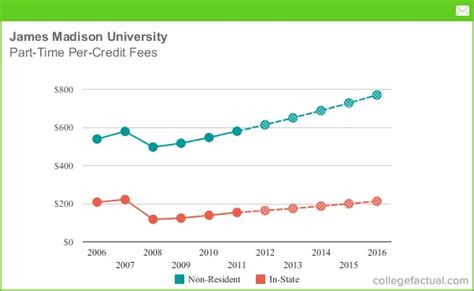Understanding the Tuition Surge
James Madison University (JMU) recently announced a tuition increase that has sparked concern and debate among students and stakeholders. This article delves into the details of the increase, its implications for students, and the potential impact on the university’s future.

Tuition and Fees Breakdown
For the 2023-2024 academic year, undergraduate in-state tuition at JMU will increase by 4.5%, totaling $14,230. Out-of-state students will face a 6% increase, bringing their tuition to $29,498. Additionally, mandatory fees will also rise by 3%, bringing the total cost of attendance to $23,182 for in-state students and $42,630 for out-of-state students.
Factors Driving the Increase
JMU officials cite several factors contributing to the tuition increase:
- Rising operational costs: Inflation has spurred an increase in expenses such as salaries, utilities, and maintenance.
- Faculty and staff compensation: JMU is committed to attracting and retaining high-quality faculty and staff, which requires competitive salaries.
- Academic enhancements: The university is investing in new initiatives such as research programs, academic advising, and career services to enhance the student experience.
- Capital improvements: JMU is planning major construction projects, including a new science building and dormitory, which require significant funding.
Impact on Students
The tuition increase poses financial challenges for many students. According to the College Board, tuition and fees have increased by over 250% in the past four decades, outpacing inflation. This has made it increasingly difficult for students and families to afford higher education.
Increased Student Debt: The tuition increase will likely lead to higher student loan debt for many students. The average college graduate in the United States has over $30,000 in student loan debt. The added burden of a tuition increase could exacerbate this problem.
Financial Aid Considerations: JMU offers a variety of financial aid programs to help students cover the cost of tuition. However, the tuition increase may outpace the growth of financial aid awards. This could result in students having to pay more out-of-pocket expenses.
Impact on the University
Financial Sustainability: JMU’s decision to raise tuition is part of a broader trend among colleges and universities seeking to ensure financial sustainability. Rising costs and declining state funding have forced institutions to find alternative revenue sources.
Academic Reputation: JMU is known for its academic excellence and student success. Tuition increases can impact the university’s ability to attract and retain top students and faculty. Maintaining a balance between affordability and academic quality is critical for JMU’s long-term success.
Strategies to Address the Increase
Alternative Funding Sources: JMU should explore alternative funding sources to reduce its reliance on tuition revenue. This could include increased research grants, corporate partnerships, and endowment growth.
Cost-Cutting Measures: The university should implement cost-cutting measures to minimize the impact on students. This could involve reducing administrative expenses or exploring more efficient operations.
Increased Financial Aid: JMU should prioritize increasing financial aid awards to help students offset the tuition increase. This could involve expanding existing scholarships or creating new programs.
Conclusion
The tuition increase at JMU has significant implications for students, the university, and the future of higher education. It is essential to consider the financial burdens it poses on students while ensuring the long-term sustainability of the university. By implementing effective strategies and considering alternative funding sources, JMU can address the challenges presented by the tuition increase and maintain its commitment to providing a high-quality education.
FAQs
1. Why is JMU raising tuition?
JMU cites rising operational costs, faculty compensation, academic enhancements, and capital improvements as factors driving the tuition increase.
2. How much will the tuition increase be?
In-state undergraduate tuition will increase by 4.5%, and out-of-state tuition will increase by 6%.
3. How will the tuition increase impact students?
The tuition increase may increase student loan debt and out-of-pocket expenses for many students.
4. What is JMU doing to address the impact on students?
JMU offers a variety of financial aid programs and is exploring cost-cutting measures to minimize the impact on students.
5. What is the impact of the tuition increase on JMU?
The tuition increase is part of a broader trend among colleges and universities seeking financial sustainability. It could potentially impact JMU’s ability to attract and retain top students and faculty.
6. What strategies can JMU implement to address the tuition increase?
JMU can explore alternative funding sources, implement cost-cutting measures, and increase financial aid awards to address the tuition increase.
